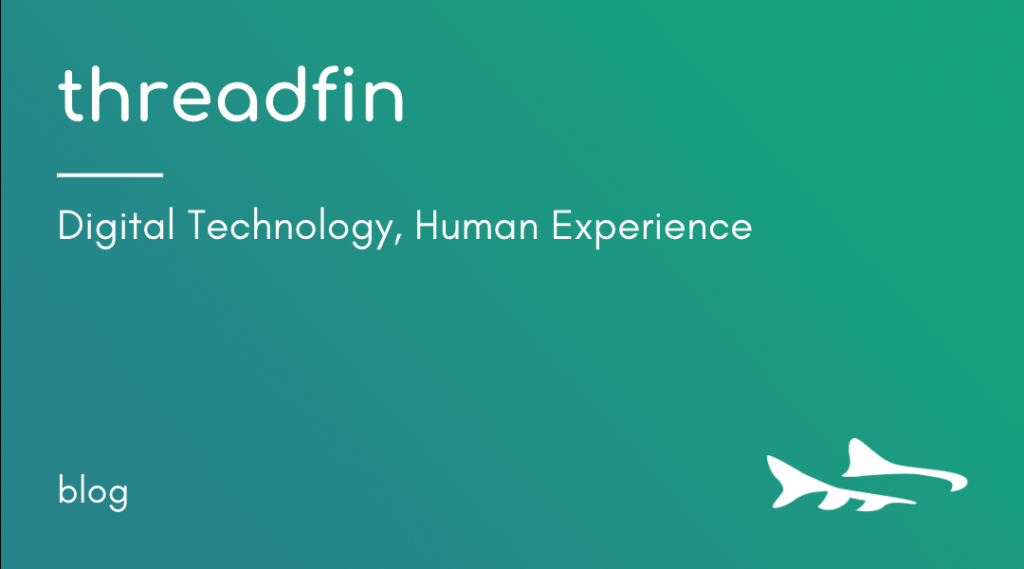While there’s no doubt that technology continues to transform organizations and enable innovation, digital technology isn’t always human-centered. That can make it harder for employees to get work done and harder for customers to have their needs met.
According to Threadfin’s Experience Practice Lead, Diane Magers (CCXP and Founder and Chief Experience Officer at Experience Catalysts) digital can make our lives easier, save us time and grow our engagement with brands (whether we’re an employee or a customer), but organizations still have to thoughtfully design the digital experience just like they would every other interaction.
The digital journey must be carefully considered in tandem with the non-digital journey so that the employee and customer can interact with an organization based on their needs—whether that’s through a digital channel or a person-to-person channel. Think of it in terms of a needs-based journey: it’s about the spectrum of human needs on the most basic level, from completing the simple basic task all the way to seeking an emotional connection.
Imagine for a moment that you’ve misplaced your debit card. You feel fairly certain that nothing nefarious has taken place, but you’re not sure enough to wait it out and see what happens. Perhaps all you want to do is report the missing card and see about getting a new one—basic tasks that you could do via phone (a real person or an automated system), at a branch office or perhaps online (assuming all the systems are in place and properly configured). But perhaps you’re actually quite worried and you feel vulnerable. Will anyone have gotten into your account? Will you be able to get a new card quickly? You need reassurances that your account is protected and confidence that you’ll receive a new card soon.
That’s what an emotional connection can provide.
Now imagine that you’re a bank employee and your job is to support the needs of the bank’s customers. When a customer has a misplaced debit card, you’ll need to use a variety of tools and systems to cancel the existing card, research any unauthorized charges, order a new card and communicate with the customer to keep them in the loop and build their confidence that everything is being handled safely and quickly.
All the elements, digital and non-digital, must come together to meet the need of employees and customers in the way that best suits them. When done properly, digital technology allows us to add more value to both our digital and human interactions.
Every interaction, touchpoint and phase of interaction is a part of the overall experience—and therefore must be considered. Not only that, experience is an ongoing process, growing and evolving with every interaction. It’s the cumulative impact of many touchpoints which must all be orchestrated to fulfill how we want our brands to be experienced. This has the potential to be incredibly challenging, but Threadfin’s
Experience Threading systematically accounts for every element of the digital journey and its impact on employees and customers. The resulting union of digital technology and the human experience is what makes it easier for employees to get work done and easier for customers to have their needs met.
For organizations that aspire to true digital transformation…
Digital transformation is purposely leveraging the cloud and other digital solutions, along with employee experience and customer experience, to best enable the workforce while driving successful business outcomes.
…success requires a commitment to identifying and improving employee and customer experiences through a series of programmatic changes and investments that deliver meaningful impact.
Learn more about digital transformation and experience here.

